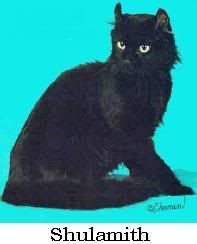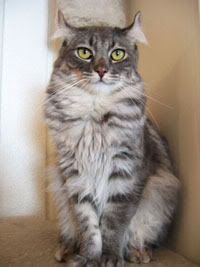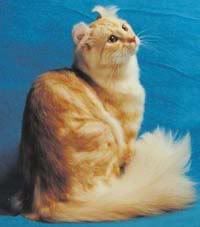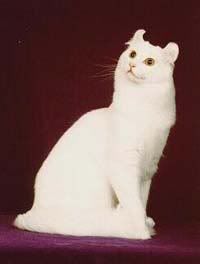It's really amazing, and urh... Okay, I recently watched a youtube show and I really envy the guy who have such an obedient dog and able to perform 40 tricks. oh what? 40 tricks?!!! I really hope my dog could perform that much but I dun wanna stress her out. I'll slowly teach and guide her.
Suki currently knows Sit, Stay, Come, Down, Bang (act dead), Roll, Turn, Stand (with 4 legs on floor), Hand, Another Hand, Touch. So, I consider she have learnt about 11 tricks? Currently she's in a training for Back. But she's only able to perform these tricks with 2 condition.
1. Favourite Snacks
2. At Home
It's just so cute watching her performing these tricks and feel like squeezing her hugging her tight.
I've compiled a few websites for those of you who are interesting in teaching your dog new tricks but doesn't know how to start or which trick.
1. My Dog Trick Page!
2. Dog Trick Academy
3.Janet Wall's How to Love Your Dog
4. Dog Tricks, Tips & Insights
I couldn't just end this blog without showing this Youtube show. So, enjoy~
5/27/2008
5/17/2008
Dogs Do the Darnedest Things
There is those moments that Suki does the funniest and most entertaining things that I somehow wonder what is she trying to say or trying to express. Suki always bite her teddy cow's head till she falls asleep while the the teddy cow head is still in her mouth. Whenever she sees that teddy cow, she'll need to bite it. Soemtimes she'll release her frustration by biting and swinging the teddy cow. But if I hide her teddy cow, she'll sniff and run the whole house for it.
For me, having a furkid is a no regret things. They always kept you accompany and all they wants from you is just a little more love and care. Suki filled and light up my life, how bout yours?
Just pay a little more attention to them and you'll understand them better. Here I found some good explaination which might have answered your queries all these while about your furkid.
Q: Why does my dog like to burrow under the covers?
A: “Dogs are denning animals,” explains Kellyann Conway, treasurer of the Association of Pet Dog Trainers and co-founder of PetsIncredible, a media production company that develops pet-related media. In the same way that humans like to fluff up their pillows before settling in for the night, she says, some dogs like to create comfy beds and hide under clothes and sheets to make themselves feel safe, warm and comfortable. All breeds may do this, but terriers, hounds and huskies are more predisposed to burrowing than others.
There’s no downside or risk to letting your dog burrow, unless you don’t want dog hair under the covers. A separate dog bed might be handy to keep the hair out of yours. An additional bonus of your dog having the instinct to burrow is that it can make crate training easier, since being in a crate can mimic that denlike environment.
Q: Why does my dog like to turn in three circles, looking for just the right spot, before she pees?
A: There are at least two thoughts on why dogs circle before defecating or urinating, says Tony Kremer, a veterinarian and dog behavior expert who runs a Web site, DrTony.com. One reason, Kremer says, is to “scan the terrain for predators so they don’t get ‘caught with their pants down.’” Dogs also use their keen sense of smell to know who was there before. “They may be [homing] in on just the right spot to mark with their scent,” he adds. There’s no harm in indulging this behavior, other than standing around in the elements waiting for your dog to find a spot she likes.
Q: It’s the ultimate stereotype about dogs gone wild: They dig. They dig up your flower beds. They dig under your fence. They dig to bury bones. Why?
A: It’s simple: “They dig because it is fun,” says Susan Daffron, the Sandpoint, Idaho-based author of “Happy Hound: Develop a Great Relationship With Your Adopted Dog or Puppy.” They may also dig because their highly developed sense of smell leads them to something underground that you may not detect.
While there is nothing inherently wrong with digging, if it gives your dog the chance to escape under a fence, it can be dangerous. Conway says you can train a dog to dig in one particular spot, rather than all over your flower beds. Designate one area, and whenever your dog starts to dig elsewhere, lead him back to the designated spot. Burying treasure for him to find in the chosen spot will help reinforce that behavior.
Q: Why do dogs chase their tails?
A: Because they’re there. “Sometimes it’s that simple,” Daffron says. They may reach back there to scratch an itch, see the tail and start chasing. If you laugh, praise or otherwise make a fuss, your dog will keep doing it, because dogs like attention. If it drives you nuts, say “No,” and don’t egg him on.
Q: My dog has the grossest habit: She likes to eat poop. Why would she do this?
A: No one really knows why dogs engage in coprophagia (the fancy term for poop-eating). Some people think it indicates an enzyme is lacking in dogs’ diets. Others think it stems from a maternal instinct to clean up the den.
It is gross, yes, but it is also not a healthy habit. If your dog is eating the poop from other dogs, it could be worse than unhealthy — it could be dangerous. What’s the easy fix? Clean up after your dog whenever she goes and don’t let her near other dogs’ droppings. Adding meat tenderizer or Tabasco sauce to dog food may make your dog’s poop less appetizing to her.
Q: My dog performs this hilarious duck walk, basically scooting her butt along the ground. What’s up with that?
A: While not as gross as coprophagia, this is a behavior that isn’t all that funny when you know what’s behind it. (Pardon the pun.) Dogs have anal glands — also called anal sacs — on each side of the anus. They fill with foul-smelling liquid that is normally expressed when the dog defecates, but sometimes they do not express naturally. When your dog scoots across the carpet, she’s trying to do this on her own.
Take your dog to the vet and have her anal glands expressed. If you ignore this problem, the glands may become impacted, which can cause an infection and serious discomfort for your dog — plus, your carpet will get really dirty.
Information taken from Dog Central - Presented by Pedigree
For me, having a furkid is a no regret things. They always kept you accompany and all they wants from you is just a little more love and care. Suki filled and light up my life, how bout yours?
Just pay a little more attention to them and you'll understand them better. Here I found some good explaination which might have answered your queries all these while about your furkid.
Q: Why does my dog like to burrow under the covers?
A: “Dogs are denning animals,” explains Kellyann Conway, treasurer of the Association of Pet Dog Trainers and co-founder of PetsIncredible, a media production company that develops pet-related media. In the same way that humans like to fluff up their pillows before settling in for the night, she says, some dogs like to create comfy beds and hide under clothes and sheets to make themselves feel safe, warm and comfortable. All breeds may do this, but terriers, hounds and huskies are more predisposed to burrowing than others.
There’s no downside or risk to letting your dog burrow, unless you don’t want dog hair under the covers. A separate dog bed might be handy to keep the hair out of yours. An additional bonus of your dog having the instinct to burrow is that it can make crate training easier, since being in a crate can mimic that denlike environment.
Q: Why does my dog like to turn in three circles, looking for just the right spot, before she pees?
A: There are at least two thoughts on why dogs circle before defecating or urinating, says Tony Kremer, a veterinarian and dog behavior expert who runs a Web site, DrTony.com. One reason, Kremer says, is to “scan the terrain for predators so they don’t get ‘caught with their pants down.’” Dogs also use their keen sense of smell to know who was there before. “They may be [homing] in on just the right spot to mark with their scent,” he adds. There’s no harm in indulging this behavior, other than standing around in the elements waiting for your dog to find a spot she likes.
Q: It’s the ultimate stereotype about dogs gone wild: They dig. They dig up your flower beds. They dig under your fence. They dig to bury bones. Why?
A: It’s simple: “They dig because it is fun,” says Susan Daffron, the Sandpoint, Idaho-based author of “Happy Hound: Develop a Great Relationship With Your Adopted Dog or Puppy.” They may also dig because their highly developed sense of smell leads them to something underground that you may not detect.
While there is nothing inherently wrong with digging, if it gives your dog the chance to escape under a fence, it can be dangerous. Conway says you can train a dog to dig in one particular spot, rather than all over your flower beds. Designate one area, and whenever your dog starts to dig elsewhere, lead him back to the designated spot. Burying treasure for him to find in the chosen spot will help reinforce that behavior.
Q: Why do dogs chase their tails?
A: Because they’re there. “Sometimes it’s that simple,” Daffron says. They may reach back there to scratch an itch, see the tail and start chasing. If you laugh, praise or otherwise make a fuss, your dog will keep doing it, because dogs like attention. If it drives you nuts, say “No,” and don’t egg him on.
Q: My dog has the grossest habit: She likes to eat poop. Why would she do this?
A: No one really knows why dogs engage in coprophagia (the fancy term for poop-eating). Some people think it indicates an enzyme is lacking in dogs’ diets. Others think it stems from a maternal instinct to clean up the den.
It is gross, yes, but it is also not a healthy habit. If your dog is eating the poop from other dogs, it could be worse than unhealthy — it could be dangerous. What’s the easy fix? Clean up after your dog whenever she goes and don’t let her near other dogs’ droppings. Adding meat tenderizer or Tabasco sauce to dog food may make your dog’s poop less appetizing to her.
Q: My dog performs this hilarious duck walk, basically scooting her butt along the ground. What’s up with that?
A: While not as gross as coprophagia, this is a behavior that isn’t all that funny when you know what’s behind it. (Pardon the pun.) Dogs have anal glands — also called anal sacs — on each side of the anus. They fill with foul-smelling liquid that is normally expressed when the dog defecates, but sometimes they do not express naturally. When your dog scoots across the carpet, she’s trying to do this on her own.
Take your dog to the vet and have her anal glands expressed. If you ignore this problem, the glands may become impacted, which can cause an infection and serious discomfort for your dog — plus, your carpet will get really dirty.
Information taken from Dog Central - Presented by Pedigree
5/06/2008
Crawl, Suki Crawl
Hereby is a casual video of Suki doing a few tricks including her new trick - 'crawl'. Oh gosh, this trick is the longest lesson so far. She's a lil too excited here and there's quite a few NG in other video(not uploaded). But, my most preferred trick of hers so far is crawl, doesn't she looks like a worm? That's just so cute!
I will capture a better video in the future. Hope you like it. Enjoy~
I will capture a better video in the future. Hope you like it. Enjoy~
5/04/2008
American Curl
We're not talking about Americans with curly hair here, it's about a breed of cat which is called American Curl. It is still rare nowadays and I've just got to know bout it after reading my Clubpets megazine. So, not wasting anymore time, I googled it as well.

Profile
Name : American Curl
Size : Medium, slender and well-balanced build with trademark curled ears.
Average lifespan : 17 years
Personality : Curious, playful, intelligent, even-tempered, affectionate, people-oriented, attentive, and enjoys playing with other animals and children.
Favourite activities : Spending time with its humans, 'bumping heads' with newfound friends, and indulging in playful kitten-like behaviour.
Tender loving care : Its curledears will need regular cleaning with a quality ear-cleaning product, but weekly brushing and combing is more than sufficient for this low-maintenance breed.
It's all started in a sunny day in June 1981, two uniquely curled ear stray kittens wandered up to the door step of Ruga family in Lakewood, California. Joe Ruga decided not to feed the skinny kittens, however his wife, Grace fed the kittens. The kittens were both longhaired, one black and the other black and white. The family named them Shulamith and Panda respectively, but Panda disappeared several weeks later, making Shulamith the foundation female of the American Curl breed. Hm...you must be thinking Shilamith is a real lucky cat! A stray whom became a world standard.
The American Curl is a medium sized cat (5-10 lbs), and does not reach maturity until 2-3 years of age. They are strong and healthy, remarkably free of the genetic defects that affect many purebred cats.
American Curl kittens are born with straight ears, which begin to curl within ten days. After four months, their ears will not curl any longer, and should be hard and stiff to the touch. A pet quality American Curl may have almost straight ears, but showcats must have ears that curl in an arc between 90 and 180 degrees. A greater angle is preferable, but cats will be disqualified if their ears touch the back of their skulls.



You may click here to view more information from Wikipedia.

Profile
Name : American Curl
Size : Medium, slender and well-balanced build with trademark curled ears.
Average lifespan : 17 years
Personality : Curious, playful, intelligent, even-tempered, affectionate, people-oriented, attentive, and enjoys playing with other animals and children.
Favourite activities : Spending time with its humans, 'bumping heads' with newfound friends, and indulging in playful kitten-like behaviour.
Tender loving care : Its curledears will need regular cleaning with a quality ear-cleaning product, but weekly brushing and combing is more than sufficient for this low-maintenance breed.
It's all started in a sunny day in June 1981, two uniquely curled ear stray kittens wandered up to the door step of Ruga family in Lakewood, California. Joe Ruga decided not to feed the skinny kittens, however his wife, Grace fed the kittens. The kittens were both longhaired, one black and the other black and white. The family named them Shulamith and Panda respectively, but Panda disappeared several weeks later, making Shulamith the foundation female of the American Curl breed. Hm...you must be thinking Shilamith is a real lucky cat! A stray whom became a world standard.
The American Curl is a medium sized cat (5-10 lbs), and does not reach maturity until 2-3 years of age. They are strong and healthy, remarkably free of the genetic defects that affect many purebred cats.
American Curl kittens are born with straight ears, which begin to curl within ten days. After four months, their ears will not curl any longer, and should be hard and stiff to the touch. A pet quality American Curl may have almost straight ears, but showcats must have ears that curl in an arc between 90 and 180 degrees. A greater angle is preferable, but cats will be disqualified if their ears touch the back of their skulls.



You may click here to view more information from Wikipedia.
Subscribe to:
Posts (Atom)















